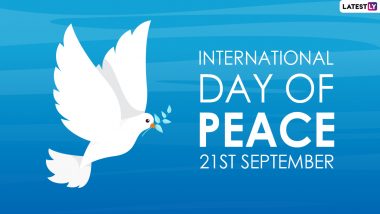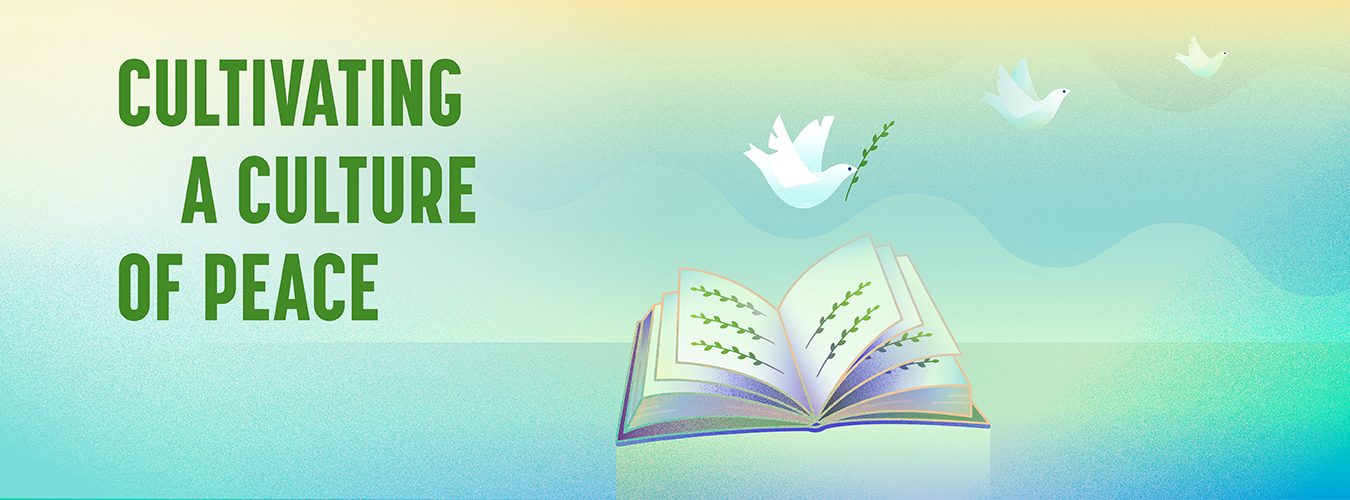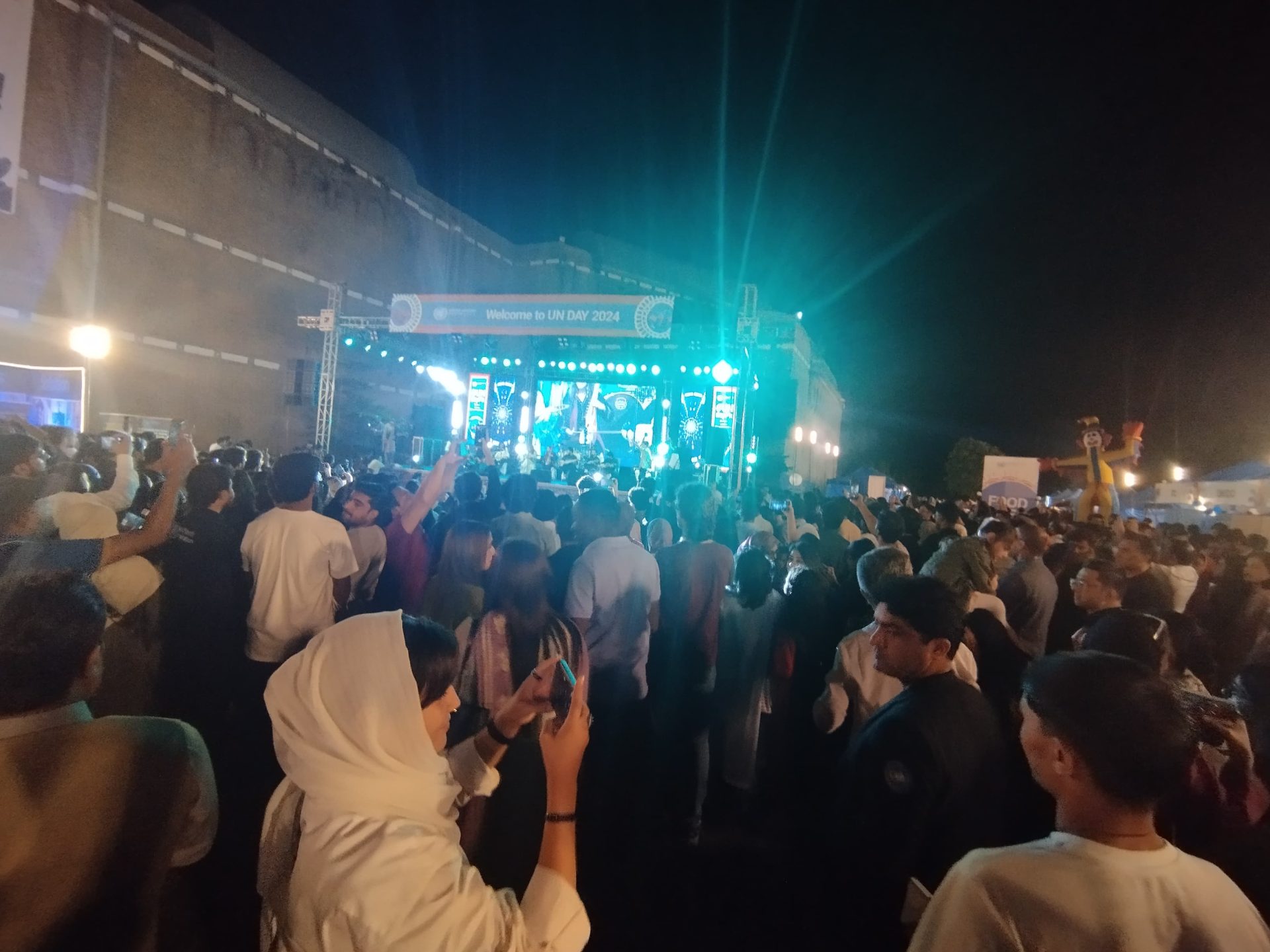ISLAMABAD (Hina Zafar): The International Day of Peace (“Peace Day”) is observed around the world each year on 21 September. Established in 1981 by unanimous United Nations resolution, Peace Day provides a globally shared date for all humanity to commit to Peace above all differences and to contribute to building a Culture of Peace. Globally, the day is observed with a variety of events, public gatherings, and community-based projects, all of which are meant to advance peace and settle disputes.
HISTORY OF INTERNATIONAL PEACE DAY:

The International Day of Peace was first held to highlight nonviolence and a ceasefire, but it now
covers a wider range of topics. The UN’s Agenda for Peace was enlarged in the 1990s to cover
human rights, development, and peacebuilding, realizing that resolving the core causes of
conflict is necessary for achieving peace. The day’s theme was further defined in 2015 with the
introduction of the Sustainable Development Goals (SDGs), which included goals pertaining to justice, peace, and robust institutions. Furthermore, the advent of social and digital media has increased involvement and participation on a worldwide scale, increasing the day’s effect and interactivity.
The focus of the International Day of Peace has broadened over the years and now includes issues
like environmental preservation, human rights, and sustainable development in addition to ceasefires and nonviolence. The 1992 UN Agenda for Peace placed a strong emphasis on the necessity for a comprehensive strategy for peacebuilding, one that goes beyond simply preventing conflict to include fostering social and economic development as a means of fostering peace.
SIGNIFICANCE AND OBJECTIVES:
- Promoting Global Awareness
Raising awareness of the value of peace and motivating people to work toward fostering a culture
of peace are the main objectives of the International Peace Day. It reminds us that maintaining
peace is both a shared obligation and a fundamental human right. The day serves as a reminder
of how linked global challenges are and how urgently we need to work as a community to address
them. - Encouraging Ceasefire and Conflict Resolution
Promoting ceasefires in areas of war is one of the main goals of the celebration. Temporary
ceasefires or reductions in violence are common on this day to facilitate humanitarian activities
and dialogue. This feature demonstrates the UN’s dedication to resolving disputes and
safeguarding civilians in crisis zones. - Fostering Community and Global Engagement
People of all ages are encouraged to participate in discussions on peace and non-violence
through events like peace marches, educational workshops, and cultural performances.
Additionally, the day provides an opportunity for groups to highlight their peacebuilding and
conflict resolution initiatives.
OBSERVANCES AND ACTIVITIES:
- Grassroots and Community Efforts:
The International Day of Peace is observed through a variety of community-driven and grassroots
programs in addition to formal UN events. Activities that support peace education and conversation are organized by non-governmental organizations (NGOs), local governments, and
schools. To raise awareness about peace and conflict resolution, for instance, NGOs may launch
campaigns, and schools may host seminars or art exhibits with a peace theme. - Media and Public Awareness:
The message of the International Day of Peace is greatly enhanced by the media. Public service
announcements, social media, and news organizations are utilized to inform the public about the
significance of the day and to promote participation. Celebrities and public leaders frequently
use their platforms to promote peace and emphasis
THEME OF PEACE DAY 2024:
The 2024 International Peace Day, celebrated with the theme of ‘Cultivating a Culture of Peace’. Through adaption of the Declaration and Program of Action on a Culture of Peace. 2024 Peace Day’s message emphasize the importance of taking action and persistently advocating for peace, and hope to lead towards a better future.

Some of the previous themes have included:
- 2023 “Actions for Peace: Our Ambition for the #Global Goals”
- 2022 “End Racism. Build Peace”
- 2021 “Recovering Better for an Equitable and Sustainable World”
- 2020 “Shaping Peace Together”
CONCLUSION:
The day encourages us to foster understanding by promoting dialogue and mutual respect across cultures and nations, bridging divides to build stronger, more inclusive societies. It also urges us to commit to action, whether through advocacy, volunteering, or supporting peace-building initiatives, to contribute to a more harmonious world. Additionally, it offers a moment to reflect on both the strides made toward peace and the challenges that remain, using this reflection to inspire continued efforts toward justice and solidarity. By celebrating the International Day of Peace, we reinforce the belief that peace is not merely the absence of conflict but a proactive and enduring commitment to justice, respect, and mutual support.
M. Saeed Islahi, Khajida Zulfiqar, Areeba Liaquat, Arfa Iftikhar, Nazish Zahra, Saleet Fatima also contributed in this story.



